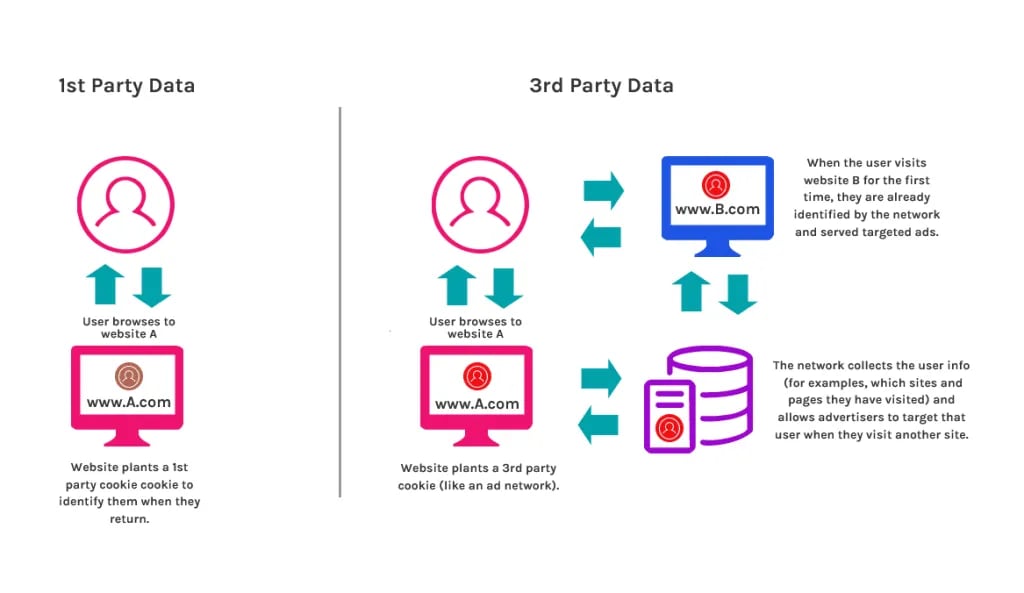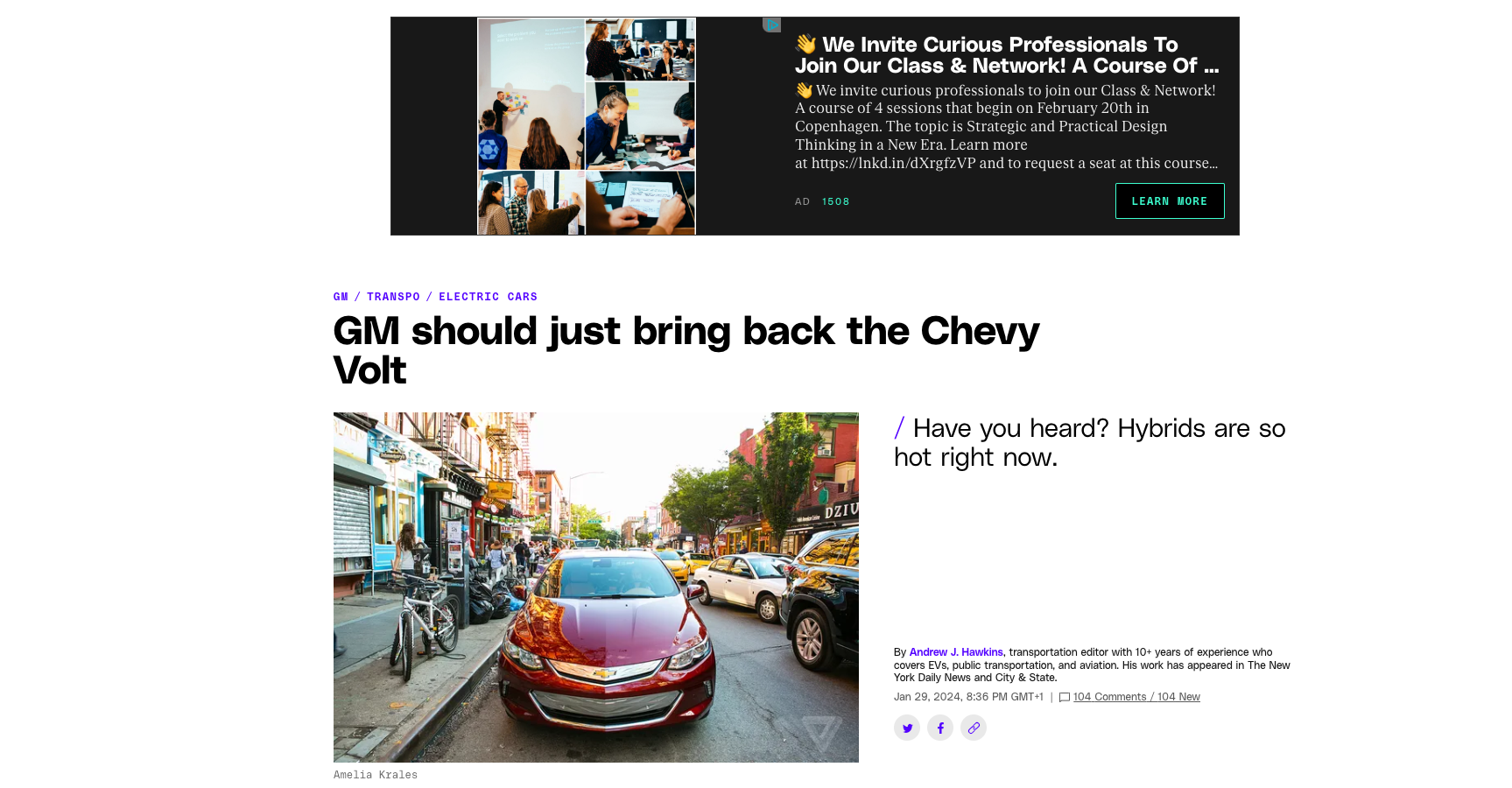What is Creative Freshness?
The journey towards a cookieless world is a path paved with challenges and opportunities. It's a chance to foster more meaningful, trust-based relationships with audiences and to innovate in how we connect with them. As third-party cookies become a part of digital history, the future of marketing shines bright for those who are prepared to meet the challenge of creating more and better content.
-
Key Creative Production Strategies
-
How to Increase Your Ads' Quality
-
Keeping up with Ad Production: Creative Management Platforms
-
Have a Channel-first Approach
-
The Role of AI in Creativity
-
In a digital marketing landscape where change is the only constant, the end of third-party cookies is a key turning point. Currently, Google has culled third-party cookies from only 1% of Chrome users, a preliminary step before their complete phase-out by Q3 2024. This move is not just a policy update; it's a paradigm shift, requiring marketers to rethink and adapt their strategies in real time.
Understanding the Cookie Conundrum
Cookies have been digital advertising's cornerstone, tracking user behaviour for targeted ads. Distinguished as first-party and third-party, they serve different roles. While first-party cookies enhance user experience on the actual site visited, third-party cookies, often seen as intrusive, track user activity across different sites for advertising.

Kwanzoo made this nifty chart to help you understand the difference between first and third-party cookies
Their impending demise is a nod to increased privacy concerns, with significant implications for digital advertising. And yet, these cookies have been pivotal in ad targeting and measurement. To counter their absence, we'll need new, privacy-compliant methods to reach audiences without sacrificing personalisation.
We'll share some of these new methods below 👇
Key Technical Strategies
|
⚠️ Before diving into what you can do to make your creatives stand out with your audience, let's cover the technical set-up you should be transitioning into in this post-third-cookies world. |
1) Set up Cookie Consent Mode v2
- What is Cookie Consent Mode v2? Cookie Consent Mode v2 is a privacy feature in Google Analytics that helps websites obtain and manage user consent for tracking cookies, ensuring compliance with data protection regulations. It uses Google’s AI to make ‘conversion modelling’ that then predicts the data and “fills out the data holes”.
- Why should you set it up? If you don’t set it up before March 2024, your Google Ads campaigns will be hurt and limited.
- How do I get started? The best way is to get use a CMP (Consent Management Platform) like CookieInformation.
2) Start collecting first-party cookies
In the third-party-cookieless future, first-party data emerges as the beacon of hope. And your two best friends here are going to be first-party cookies and Customer Data Platforms.
To give you the best possible introduction to first-party cookies, why you need them, and how to start collecting data with them, we asked our friends at Raptor to answer a few questions.
- What are first-party cookies? 1st party cookies are small pieces of data stored on a user's device by the website they are visiting. While 3rd party cookies are collected on other domains, 1st party cookies are shared with full consent from the user, and they reveal valuable information about your customers' interactions on your site.
- Why should you collect 1st party cookies? With new privacy laws limiting third-party cookies, taking ownership of 1st party data is crucial for understanding your users and delivering accurate and personalised customer experiences.
- How do you get started with first-party cookies? Begin with a Customer Data Platform (CDP), which organises and activates all your 1st party data in one place, offering a complete view of customer interactions that's vital for personalised marketing.
3) Set up Conversion API (CAPI)
- What is CAPI? Conversion API allows businesses to send customer interactions and events directly to the platform, enabling more accurate tracking and optimization of advertising campaigns through server-side tracking.
- Why do you need it? To get more valid data. Advertisers experience around 20% more conversions with CAPI installed compared to previously.
- How do I set it up?
- Meta: Through Google Tag Manager or a Meta partner (commerce platforms / CRMs / Zapier). Read more here.
- LinkedIn: Through Google Tag Manager or a LinkedIn partner. See how to set it up through GTM here.
4. Take a look at Google Privacy Sandbox
Google has been working on alternative tools, notably the Privacy Sandbox, to provide advertisers, media agencies and media with an alternative to third-party cookies. However, the actors fear that they will not get access to useful tools before Google kills the disputed cookies completely - and Google can still track users across Chrome when the browser history is saved to the Google account.
Key Creative Production Strategies
Technical specs aside, what else can you change in this cookieless world? As the digital landscape evolves, your creativity and innovation in ad campaigns must also follow suit.
Easier said than done, right?
While it’s true there is no formula to make all your ads a league above the rest, there is something you can do right now to improve your ad-making game. And with a pinch of personal creativity, you can be sure your ads will keep performing in a post-third-party cookie world.
1) Stop with Static Creatives
What type of ads are you producing, and how many? In the face of the cookieless future, banner blindness and ad fatigue are going to be your no.1 enemies. You can beat them by producing more ads, and better ones too.
What do we mean by “better ads”? We mean ads that catch the attention of the user and make them click. And since you cannot target users the way you used to, you need to hinge your strategy on vibrant animations, better content, and engaging ad storytelling.

If you are producing only static, one-dimensional ads, you can already boost your creativity by adding animations, transitions, and effects to your ad elements. You will be able to let your creativity run loose, produce better creatives, and generate higher clicks from your audience. We’ve found that the more you can bring your creative weight to your ads, the better your ads will perform.
But how can you produce better ads, and produce more of them at the same time? You may ask. This brings us neatly to our second tip.
2) Keep up with Ad Production: Creative Management Platforms
The demand for fresh and engaging ad content will skyrocket. Meeting this demand requires a significant ramp-up in ad production, a challenge that Creative Management Platforms are uniquely positioned to address. These platforms revolutionise the way marketers create content. They streamline the entire creative process, from conceptualisation to design execution.
Creative Management Platforms offer templates and tools that make it easy to produce a variety of ad formats quickly.
They enable marketers to maintain a consistent brand identity across campaigns while allowing for customisation to target specific audience segments.
This approach is not only time-efficient but also cost-effective, reducing the need for extensive design resources.
Furthermore, these platforms can analyse performance data, enabling marketers to refine and optimise their creatives in real-time.
By automating routine tasks, creative teams can focus on strategic and innovative aspects of ad design, ensuring that the content is not just plentiful, but also powerful and engaging.
|
⚠️ Hey, we so happen to help advertisers like you with a Creative Management Platform that fits the description above (😉)! If you want to try it for free and see how you can scale your ad production quality and quantity, head over to https://signup.zuuvi.com/. |
3) Have a Channel-First Approach: a.k.a. Think About the Channel…
…And adapt your ads accordingly.
Do not, under any circumstance, make one-size-fits-all ads. Before designing the ad, always think about the channel you and your team are going to promote, and what the intention of the user is likely going to be.
- In the case of social media ads, a huge majority of users use them to find content, fill their spare time, or take a mental break from work-related tasks. As an advertiser, your goal here is to make them break their scroll. In this sense, using cognitive dissonance, strong 1-second hooks, and visually striking elements will play to your advantage.
- Conversely, on web pages like help articles or gallery-type articles, the user’s goal is to reach the content they want to read as quickly as possible. That means they will either actively scroll past your ads, or mute all the noise coming from banners they cannot associate immediately with the content they want to consume. In this case, recent findings show that placing text-type banner ads in picture-type web content and setting a consistent theme between the banner ad and the web content is the more effective choice.

Honestly, would you ever click on the ad above if all you want to do is scroll down and read the article?
- Alternatively, if you own the content people are navigating on, you can use contextual retargeting to place thematically consistent, high-impact ads that entice the user to click and get further down the sales funnel. If you want to see a great example of how this is done, check out the one below from Schibsted (or click here for more examples).
4) Use AI…but
In the context of ad fatigue, AI and automation offer a sustainable solution. They enable the continuous generation of fresh and relevant content, keeping the audience engaged and preventing ad blindness or hostility. This is crucial in an era where consumers are bombarded with ads and can quickly become desensitised to repetitive messaging.
Can you tell which is real and which is not?
It's quite obvious here...
Now it gets a bit harder...
But still, you can spot the real one quite easily.
However, you should not rely on AI-generated content alone. AI content is starting to lose its novelty appeal as users get better at recognising it. Adding to this, AI-generated content can often be dull, generic, or not accurate. This might lead to having a lot of uninteresting, low-performing promotional content.
Therefore, use AI as a way to get new ideas, experiment with new formats, or automate parts of your production, but never forget to add your own human touch to make your promotional content more penetrating, relevant, and effective.
Excited to begin your journey to level up your performance on advertisements? Sign up for a free trial with Zuuvi and start now!
Tags:
30.12.2025



